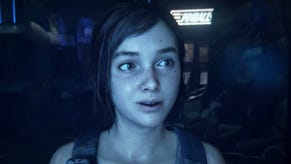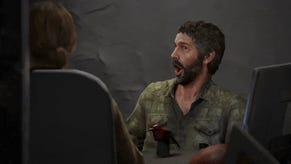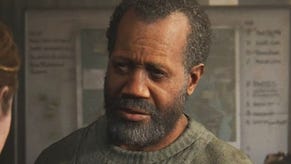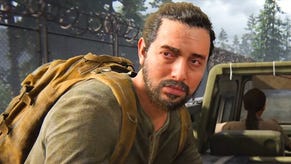New enemies, new abilities and new details - hands-on with The Last of Us Part 2
Seattle grunge.
Naughty Dog has made it very clear that The Last of Us Part 2 centres on some dark human emotions. "The emotional journey of the first game was this idea of, can we - through interactivity, gameplay, storytelling, music, all those things - make you feel, or come as close to feeling, the unconditional love a parent feels for their child," creative director Neil Druckmann tells us after I play through a section pulled from some way into the sequel's story. "There are the beautiful moments that come with that, and the kind of insane horrific moments that could come from that, like how far someone's willing to go for someone they love unconditionally.
"We have this conversation that love is sometimes insane, right? It leads you to insanity - and that's not a judgement necessarily. It's just who we are as human beings. I think we're wired this way, and we see by the end [of The Last of Us] how far Joel is willing to go to protect Ellie. With this game, we toyed with different ideas that didn't work out because they were lacking that same emotional core.
"And then what we landed on, it's a very similar question to how far are you willing to go for love, but when someone has wronged a person you really care about. How far are you willing to go to do right by them to bring the people responsible to justice and what effect that would have could have on you, in this case Ellie, the journey she goes on the people around her, if they're going too far and if so are they ever coming back from that."
In the section available for preview, Ellie works her way down Seattle's barely recognisable main streets via long overgrown quarantine checkpoints, in pursuit of a character called Nora in a nearby hospital. She's having to clamber over turnstiles that have rusted into place and barbed wire that has collapsed and given way to vegetation.
One thing you'll notice about The Last of Us Part 2 is that locations almost feel limitless. Even though you are of course always being subtly directed to specific waypoints, it never feels like you're being hemmed in or funnelled - the path forward seems organic, always allowing for optional detours to scavenge for resources. While exploring, we pass through shops and stores abandoned for 25 years at this point in the Last of Us timeline, but I was still able to find useful items here and there on the barren shelves, and by smashing the odd glass display and vending machine front to reach an overlooked rag or plastic bottle hidden away at the back of the case. Many areas had several stores you could explore if you wished, though it's easy to walk right by or overlook a hidden entryway if you're simply pushing ahead to the next story beat.
Wanting to be thorough in our exploration, I eventually came upon a craft brewery bar with its main doors locked, but with huge glass windows facing its street side. Through those windows we could see a number of infected stumbling around inside, in stark contrast to the deathly quiet streets I'd just come through. There seemed to be no quiet way of gaining entry, so after a little preparation I picked up a nearby bottle to smash the glass, alerting the small crowd inside. One runner then crashed out of a second window to attack us on the street, and was quickly followed by four more of its friends.
Luckily, I'd been able to set some trap mines around a parked car to thin their numbers as it exploded on contact, sending a shower of limbs into the air. All that was left to do was pick any stragglers off with a well-placed headshot with our bow, loot a few items including a letter and some old rags off the corpses, and then scramble back over the smashed window into the now empty bar. And there's not much in there aside from empty glass bottles and the dregs of some alcoholic spirits behind the bar that can be siphoned off to use in crafting health kits or molotov cocktails. Not exactly what you'd call a worthwhile haul, but The Last of Us has never been about big prizes and payoffs. It's about weighing the risk versus reward of any given situation, and the reward is sometimes simply scraping up just enough to stay alive until the next checkpoint.
One thing The Last of Us still does better than perhaps any other game series is in crafting hundreds of little stories that are woven directly into the fabric of its world design. At one point during the demo Ellie takes a detour into an old apartment block. In one of the homes, there were a suspicious number of resources scattered around, surfaces looked wiped down and tidy, there were even some leafy green tomato plants sunning on the windowsill. All the signs are screaming at you to stay alert but, without spoiling anything, I didn't get the memo in time.
What was even more interesting is what I found in that building had been previously hinted at by the letter dropped by an infected earlier in our playthrough. Everywhere you go in The Last of Us Part 2 seems to have its own story to tell if you look hard enough, stories that don't intersect with the main plot, stories that you could easily miss or pass over. These stories exist simply to enrich the world around you, and add together to make this an apocalypse you believe in. If you survive through them, of course.
And though combat is a key component of The Last of Us Part 2, navigating your surroundings is just as if not more important to your survival. There's now a dedicated jump button, meaning Ellie can pull herself up over ledges and clear gaps over obstacles, which, coupled with the ability to use ropes to scale and swing over buildings, lends new verticality to bypassing the many ruined downtown structures and skyscrapers. Ellie can now also go prone, crawling under vehicles and through long grass to hide from enemies while using the all-important listen mode to suss a safe route forward.
Even though combat feels very familiar to its iteration in the original game, much has been done in Part 2 to make Ellie feel more nimble. And often, no matter how well-prepared you are to face foes head-on, the safest and smartest thing you can do is run away and use your surroundings to disappear from the path of a wandering clicker or an arrow loosed by someone stalking you.
It's impressive how hese open areas, these claustrophobic tunnels and streets, bleed together seamlessly so that you scarcely notice when you move from one place of interest to another. A familiar-looking conference centre sees you exploring an accounting department, out a window, onto a fire escape, into the next building, over a rushing river and into a sewer system, where Ellie proves she finally learned how to swim. Navigating out of the sewers, you surface in an abandoned rail station which turns out to be Pioneer Square. Here, though completely overgrown, you can instantly recognise real-life landmarks like the Iron Pergola and the Tlingit Totem Pole.
It's only when I step into Pioneer Square's long grass that I hear some strange whistles and what could be the tightening of bowstrings amongst the swaying vegetation. On the edge of some trees ahead there's the faint glow of a bonfire. A whistle rings out and an arrow thuds into our shoulder. Ellie is flung back as more whistles call out in response to the first. I need to hold R1 to remove the arrow, otherwise it'll consistently damage us, but all the while I'm being flanked by this new enemy, a group of the ultra-religious zealots known as the Seraphites, or Scars. Turns out, these are way more difficult to bypass than infected. They move quickly and quietly, and communicate wordlessly with one another using whistles and calls. Most use bows, some carry axes and sledgehammers which Ellie will need to quickly dodge away from while waiting for an opening with her knife. As a combined force, they attack relentlessly. Overhead, one of their disembowelled victims swings from a tree limb.
"When we get to Seattle, and that part of the preview that you got to play, we get to see that there are two groups fighting over the city's resources," says Druckmann. "One of them is a secular, more militaristic group, and they restore electricity, they have generators, they have weapons. Then there's a religious group that has rejected a lot of those things and have become more like Luddites, they're trying to live off the land. And that's how they see they're going to protect themselves and their values.
"So each group and by extension each character within those groups, have different values. And that becomes kind of ripe for drama, exploring what happened when you bring these two groups together and their values don't match up. How do they deal with that?"
You do indeed get to see the two groups clashing later in a forest, where the seraphites 'free' another victim by stringing them up and cutting them open. This extreme violence has been seen in several trailers and gameplay demos for the game, and it's shocking in the way it depicts a clumsy, slow, amateur sort of violence, not the swift and clean almost glorified stuff we're used to seeing and indeed performing in similar types of games. "We felt, if we're going to deal with a story about the cycle of violence, and what people are capable of doing to each other, both on a mental level and a physical level, we can't shy away from that," Druckmann explained. "That would be doing the story a disservice. So we have to own that, whether people like it, love it, hate it. That's what the story is. That's the core of it, what we have to do."
But how does the development team feel about immersing themselves in that kind of heavy violence every day, and does it weigh on them as they create that story? "Whenever you deal with difficult subject matter or physical aesthetics of that difficult subject matter, like the violence you're describing, there's people that work on a team that deal with in different ways," says Druckmann. "Some people just have complete separation: like they're crafting something, and they're looking at the details of it. They're not like thinking about the greater context, they're thinking: 'how do I replicate the way light is reflecting off of this liquid surface?'
"Then there are other people that might be affected by it. And what we've done with this game and for the team is to say, look, if there's any content you feel uncomfortable working on with it for a short period of time, a prolonged period of time, there's plenty to do in this game, right? There's plenty of other things to work on that aren't those things. Let's give you the tasks and make you comfortable. At the end of the day we want people that are passionate about what they're doing. That's when they do their best work. If something ever makes them feel uncomfortable, or they're not into it, they're not going to do their best work. And we want to craft the best game possible."
For what it's worth, it never feels like the game is zeroing in on a neck stab or forcing you to look at someone's panicked death throes because it simply wants to shock and disturb. It's making a statement about the world Ellie lives in, about what the people in that world do to one another in order to stay alive or maintain control, and it's part of the story the game as a whole is trying to tell.
As you might have seen in the recent State of Play presentation, there's one enemy guard who you come upon while she's playing Hotline Miami on a Playstation Vita. Aside from the console being surprisingly well-preserved, I wondered if Naughty Dog were making a statement by including that game specifically, given that it's all about the guilty pleasure of extreme violence. Druckmann said that they were originally going to include one of their own games, but then asked themselves, "Okay, is there an opportunity here to just make some meta-statement about the kind of narrative we're after? And we're also just huge fans of Hotline Miami - like, I love that game. I love the engine of that game. So we reached out to those guys, and they were nice enough to let us put it in there."
Given that Naughty Dog is keen to avoid spoilers ahead of the game's release, there was little in the way of main story development during our demo, but Ellie as a character still shines through as she mutters hushed plans to herself or gears herself up to attack. She's clearly been affected by the events of the last five years, and she's clearly grown up in a world where innocence is a luxury few can afford. Says Druckmann of her development, "We made a journey with Ellie, and Ellie is who she is, as defined in the previous game. She's now 19. How do we explore all the facets of what it's like to be 19? Like, well, you think you're invincible. You think you know what's right and wrong in the world. You are sexually attracted to people you're attracted to. Those are all kind of things we want to explore for this character, that's how we do honest storytelling."
Of course, it's difficult to talk about The Last of Us Part 2 and not address the elephant in the room - the fact that large parts of the game appeared online last month, when hackers allegedly infiltrated Naughty Dog's private servers and posted videos of pivotal scenes online. Druckmann said these leaks sucked, of course, but ultimately the game will speak for itself. "Look, first of all, every game we've had has had this happen - The Last Of Us had stuff leak, Uncharted 4 had a truck where the games were stolen off that truck and people were posting the ending early," he said. "And that didn't take away from anything in the end, because nothing compares to playing the game. Nothing compares to being Ellie and feeling those moments, not just in cutscenes, but in gameplay conversations in the wake of the action, in the music and the emotional effect that has on you. And the story was constructed in such a way that it's really not about twists and turns. It's about slowly ratcheting the crank and feeling the tension with the choices the characters make."
The story will eventually speak for itself in the full context of the game, but as for the extended gameplay section we've played, it shows that in terms of gorgeous, terrifying spectacle and scrappy, panicked survival, The Last of Us is still unrivalled.
For Naughty Dog's part, according to Druckmann, the studio is excited for players to finally get to experience "this meticulous journey that we've crafted for Ellie and how these events effect her. There's highs and lows of that journey; there are beautiful sweet moments and these dark, kind of hard moments to deal with. And we want it to be challenging. It's like, yes, there are games that are just comfort food. This is not one of those games. There are moments in the game that are comfort food, and there are moments that are really challenging emotionally to play through. And that's part of the design of it."
The section of the game available for preview definitely demonstrated this. It's desperate and it's challenging and it's often brutal, but just like its predecessor, there are, at the same time, those moments of quiet beauty and stillness shining through like bright lights at the end of a dark tunnel. The road ahead for Ellie may be hard, but I still can't wait to walk it with her.













